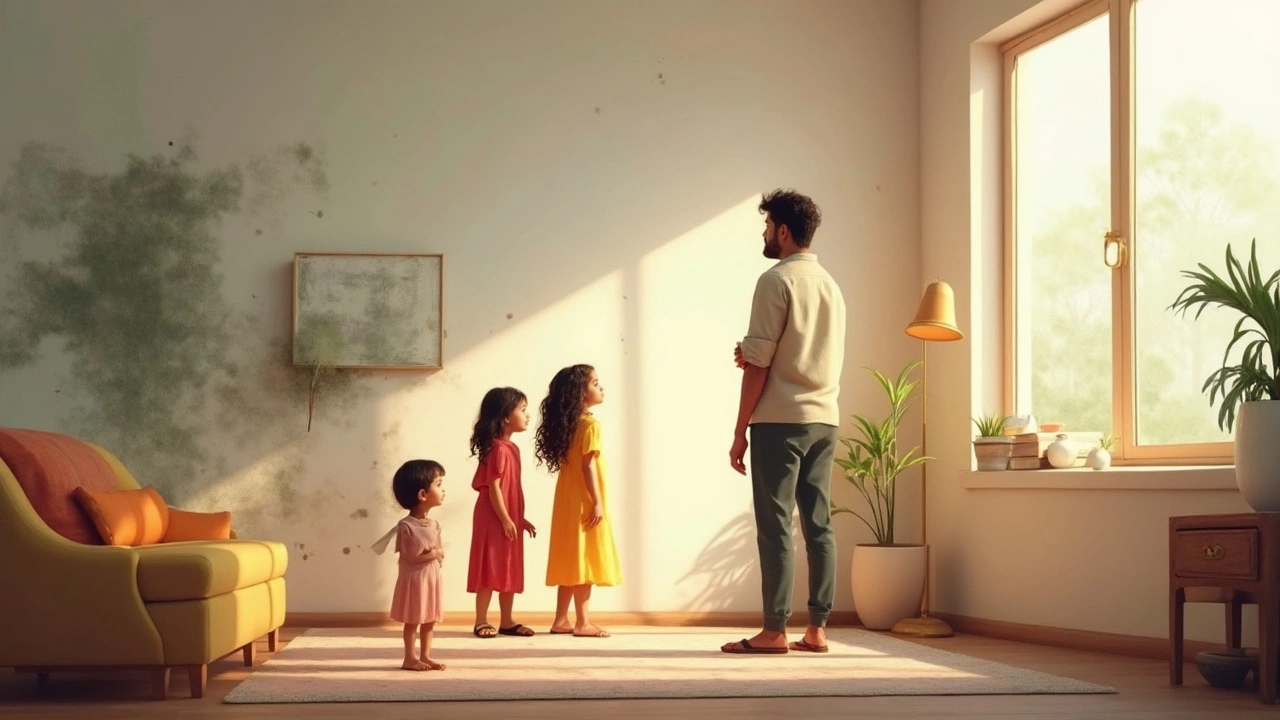Health Risks in Home Design & Construction
When thinking about Health Risks, the potential dangers that affect occupants' well‑being inside a home, home safety risks, it's essential to look at Indoor Air Quality, how clean and breathable the air inside walls and rooms is, Pest Infestations, the presence of insects or mites that can bite or transmit diseases and Structural Hazards, issues like foundation cracks or unstable roofs that pose safety threats. Health Risks don’t stay in one corner; they spread from the paint on the wall to the soil under the foundation.
First, indoor air quality is a silent player in the health‑risk game. Fresh paint, sealants, and new flooring often release volatile organic compounds (VOCs) that linger for weeks. If your home lacks proper ventilation, those chemicals can irritate eyes, trigger headaches, and even worsen asthma. The same goes for mold that thrives behind poorly sealed roofs or cracked foundations – a damp environment creates spores that settle on furniture and fabric, turning a cozy bedroom into a breathing hazard. Good ventilation, low‑VOC materials, and regular roof inspections keep the air you breathe safe.
Common Sources of Health Risks at Home
Next up, pest infestations are more than a nuisance; they can be a direct health threat. Take chiggers on patio furniture – their tiny bites cause itchy welts and, in severe cases, secondary infections. Indoor pests like cockroaches spread allergens, while rodents can carry hantavirus. The key is prevention: keep exterior surfaces sealed, store food in airtight containers, and use natural repellents that won’t harm your family.
Structural hazards sit at the intersection of safety and health. A foundation crack might look like a cosmetic issue, but water seepage through that opening can lead to hidden mold growth, compromising indoor air. Likewise, an aging roof that leaks introduces moisture into insulation, creating a breeding ground for both mold and insects. Addressing these problems early—through professional crack repair or timely roof replacement—reduces the cascade of health problems that follow.
Beyond the obvious, lighting choices can affect well‑being too. Consistent, harsh lighting can cause eye strain, while dim corners encourage dust accumulation, feeding allergens. Balancing natural light with warm, energy‑efficient fixtures improves mood and reduces the likelihood of indoor pollutants settling.
One often‑overlooked factor is chemical exposure from home improvement products. Paints, adhesives, and sealants may contain lead or asbestos in older homes. Even modern products can emit harmful fumes if applied without proper respirators. Knowing the material composition, opting for certified low‑toxic alternatives, and using protective gear are simple steps that protect both you and your family.
When it comes to flooring, cheap vinyl or laminate can off‑gas chemicals, while hardwood untreated may harbor dust mites. Selecting materials that are easy to clean and low in emissions helps maintain a healthier environment, especially for kids and seniors who spend more time on the floor.
Managing these risks isn’t a one‑off task; it’s an ongoing checklist. Start with a visual inspection of the foundation, roof, and walls. Follow up with an air‑quality test if you notice persistent odors or respiratory symptoms. Then, schedule regular pest‑control checks, even if you don’t see pests—prevention beats treatment every time.
Finally, remember that the cost of fixing a health issue after it’s developed often far exceeds the price of preventive measures. Investing in proper ventilation, quality roofing materials, and pest‑proof landscaping saves money and, more importantly, keeps your household safe.
Below you’ll discover practical guides that dive deeper into each of these areas—whether you need to choose the right paint, seal a foundation crack, or keep chiggers off your patio furniture. These resources will help you turn potential health risks into manageable tasks and keep your home a safe, comfortable place to live.
